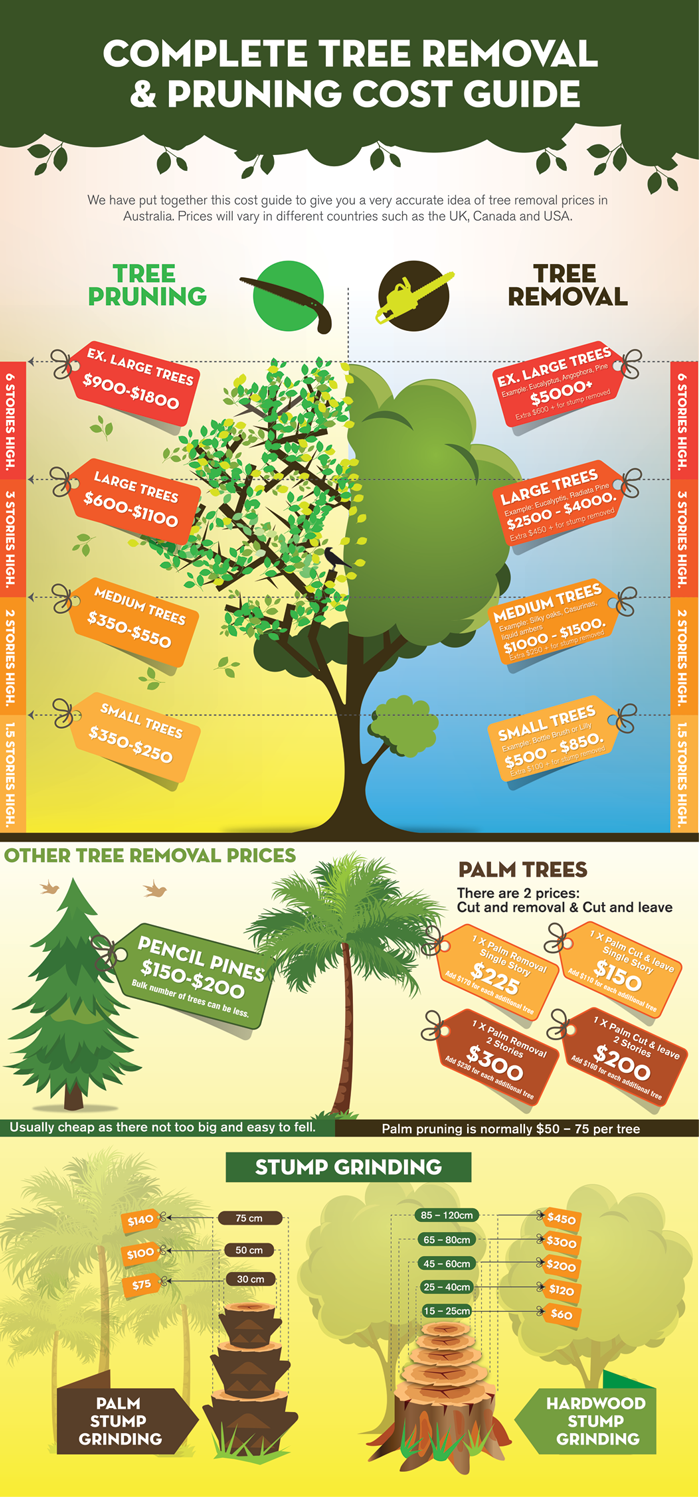Analyzing The Stability Of Trees: Determining When Removal Is Crucial
Analyzing The Stability Of Trees: Determining When Removal Is Crucial
Blog Article
Authored By-Fields Colon
If you have actually ever before questioned the fate of the trees on your building, recognizing when it's time for removal is critical. Yet just how do you determine if a tree can be conserved or if removal is the only alternative? By looking for details indicators and examining safety dangers, you can make enlightened choices that profit both your landscape and your surroundings. Allow's explore the key elements that enter play when choosing the destiny of a tree and how you can make sure the most effective outcome for your green buddies.
Indicators of Tree Decline
If you discover any one of the following indicators of tree decrease in your backyard, it may be time to consider tree removal.
One usual indicator is dead or rotting branches, which can show underlying issues impacting the tree's health and wellness. Watch out for stained or wilted leaves that continue despite correct treatment, as this could be an indicator of illness or insects.
One more warning signal is too much leaning or a noticeable change in the tree's base, which might recommend origin problems or structural instability. Watch out for fungal development on the trunk or roots, as this can show rot and endanger the tree's stability.
In addition, if you observe large cracks in the trunk or significant arm or legs, it's critical to address these issues quickly to stop possible threats. Dealing with these signs of tree decrease quickly can aid keep the safety and visual appeals of your backyard setting.
Safety and security Issues
To guarantee the wellness of your building and those around you, focusing on safety worries related to trees is extremely important. Trees can pose numerous security dangers otherwise appropriately kept. Dead or decaying branches may fall suddenly, endangering individuals or harmful frameworks.
Leaning trees can also be dangerous, particularly if they're leaning in the direction of a structure or power lines. In addition, trees with considerable origin systems near foundations or underground energies can cause substantial damages with time.
It's crucial to consistently inspect your trees for any kind of indications of prospective threat. Keep an eye out for cracks in the trunk, large dental caries, or signs of disease and degeneration. If informative post discover any of these problems, it's best to talk to an expert arborist to assess the circumstance and determine the needed course of action.
Taking aggressive steps to resolve safety issues without delay can prevent accidents and home damages in the future. Remember, the security of your residential or commercial property and those around you need to constantly be the leading priority when it concerns tree maintenance.
Consulting an Arborist
When considering the health and wellness of your trees, getting in touch with an arborist is a vital step. Arborists are educated professionals that concentrate on the care and upkeep of trees. They can assess the total wellness of your trees, identify any concerns such as diseases or architectural troubles, and supply professional referrals on the most effective strategy.
By seeking advice from an arborist, you can receive valuable insights right into the problem of your trees and establish whether elimination is necessary. Arborists have the knowledge and experience to review the risks connected with keeping a tree versus removing it. They can also use assistance on alternative services, such as trimming, cabling, or supporting, to help maintain the tree whenever feasible.
Moreover, arborists can aid you navigate any neighborhood guidelines or allows that may be needed for tree removal. Their experience can make certain that the procedure is carried out safely and in conformity with any applicable legislations.
Conclusion
To conclude, when determining whether trees can be saved or if elimination is needed, it is important to consider signs of decrease and safety and security issues. Consulting an arborist for an extensive evaluation is vital in making the best choice for the tree's wellness and possible risks. Remember, proactive treatment and prompt action can aid maintain trees and prevent accidents.
